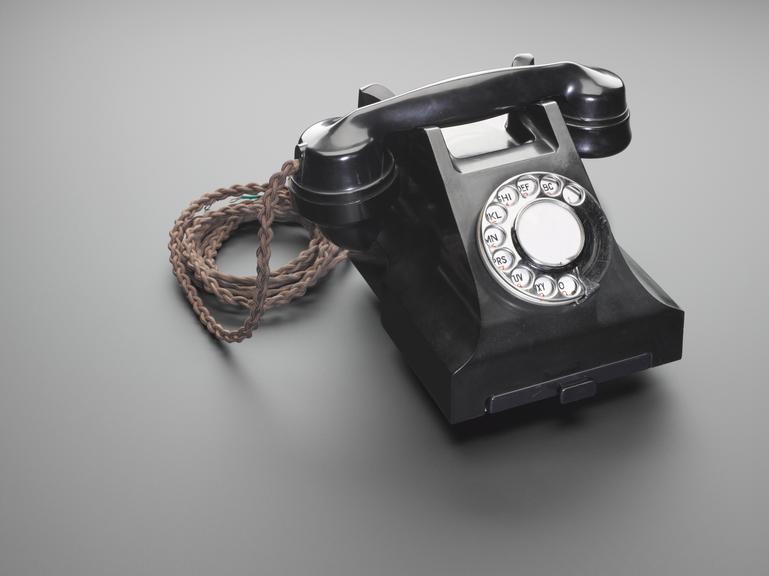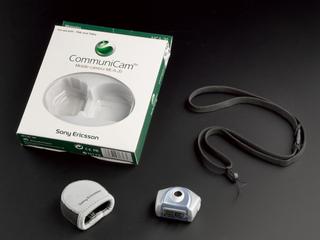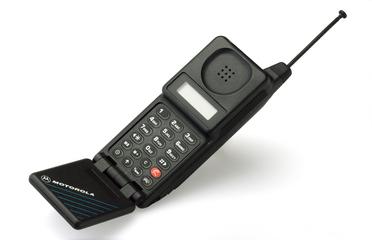








Post Office no. 332 telephone, black, unknown maker, England, 1938.
This phone works using a mouthpiece containing granules of carbon with a fixed electrode and the back and a movable one at the front (connected to a diaphragm) and a steady voltage across the telephone. When a person speaks into the mouthpiece, the acoustic vibrations from speech pull and push the diaphragm and the electrode, resulting in the carbon granules bouncing around and varying the ease with which the current can flow through them. These variations are transmitted down the telephone line to the receiver, at the distant end, where they are converted into acoustic energy again. This phone was developed by the Post Office Engineering Department in 1937, in conjunction with Ericsson Telephones Ltd (UK), whose engineers had created the original design in 1932 with a Norwegian artist, Jean Heiberg. It was the first BPO telephone with an integral bell, rather than a separately mounted one. As such, it was considered primarily suitable for business use. As well as the standard black, some sets were manufactured in ivory, red and green. It was one of the Post Office 300 Series telephones, which were the standard domestic handsets installed by the Post Office between 1938 and the late 1960s.
Details
- Category:
- Telecommunications
- Object Number:
- 1983-517
- Materials:
- steel (metal), plastic (unidentified), paper (fibre product), textile and electronic components
- Measurements:
-
overall: 130 mm x 240 mm x 220 mm, 2.525kg
- type:
- telephone
- credit:
- Donated by BT Heritage and Archives




